How a College Professor Turned Hunters Into Wildlife Protectors in Assam’s Forests
In the not-so-distant past, tribals would venture into the forest of the Saraipung Forest village nestled within Assam’s Digboi area, armed with bows and arrows in search of wildlife.
Hunting was deeply embedded in the community’s way of life – a critical means of sustenance. Species such as monkeys, squirrels, and numerous birds were regular targets.
Yet, as the world evolved and conservation emerged as a global imperative, the winds of change found their way to Saraipung village. Today, the same people who once hunted to survive have become the very protectors of the thriving ecosystem they call home.
At the heart of this transformation is a zoology professor, Rajib Tariang, whose passion for conservation sparked a broader movement. For nearly two decades, this dedicated educator has worked alongside the tribal community, steering them toward a sustainable future.
Becoming custodians of the forest
Prior to his project in Saraipung village, Rajb was already engaged in a conservation awareness programme on wildlife, especially on mitigation in the human-elephant conflicts, other wild mammals and snakes.
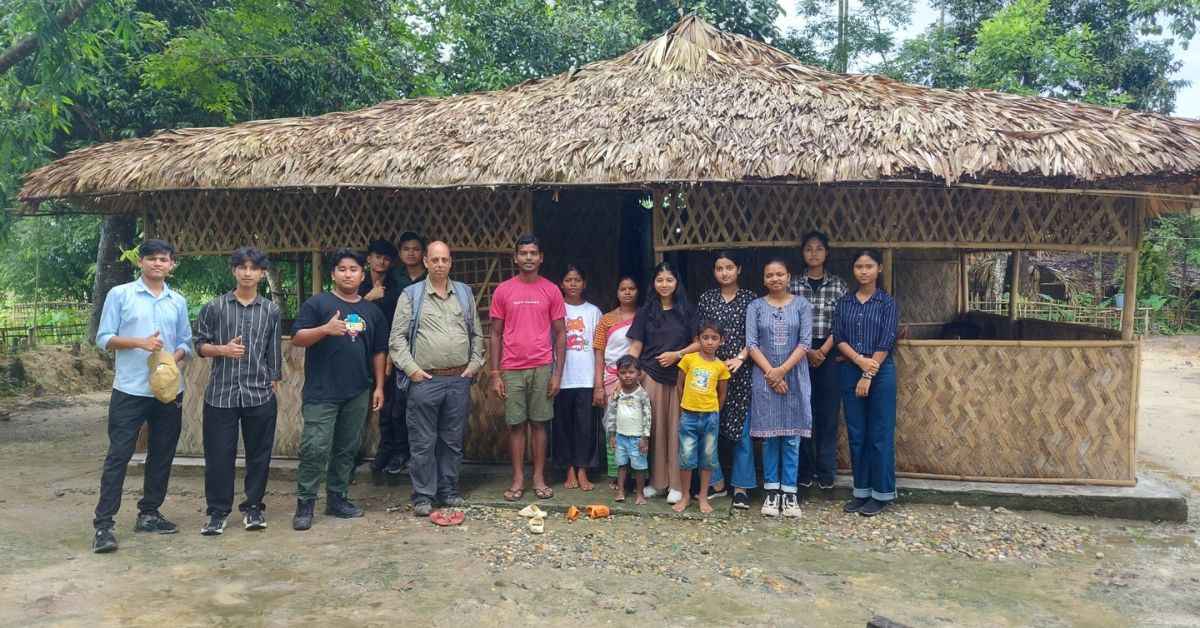 The eco-tourism model not only preserves biodiversity but also provides meaningful economic opportunities to the villagers.
The eco-tourism model not only preserves biodiversity but also provides meaningful economic opportunities to the villagers.
Later in 2010, his conservation focus shifted towards Saraipung village. “I chose Saraipung village, as it’s inside the forest area, designated as a forest village, where I saw around 10-15 people entering the forest with bows and arrows in my initial visits to these jungles which was use to hunt wild animals, at that time, only three-four forest staffs were deputed to guard this huge jungle. I stepped in to do the conservation works involving the local youths for nature camps with other participants from the rest of Assam.”
Recognising the potential for change, he initiated conversations around environmental stewardship, emphasising the long-term benefits of conserving wildlife.
Rajib understood one crucial fact – the journey from hunting to conservation required more than harsh interdictions; it required empathy and understanding.
The professor didn’t storm in with dicta from on high; rather, he made himself part of the community. He moved to the village for two months and became a fixture of their daily life.
“I installed an inverter on my personal jeep to project videos and visuals on wildlife conservation onto makeshift screens. Slowly, through these interactions, I helped envisage a future with a different legacy: these people could be protectors, not predators, of wildlife,” says Rajib.
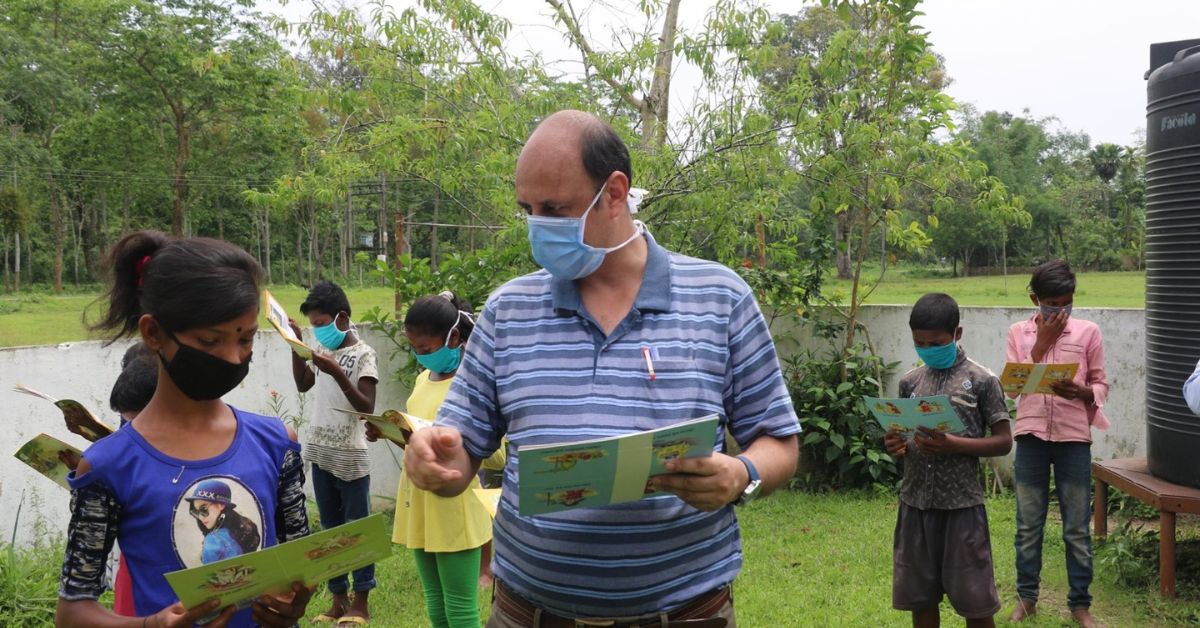 Rajib’s educational approach, using visually engaging materials and direct interaction, was key in changing the villagers’ perspective on wildlife.
Rajib’s educational approach, using visually engaging materials and direct interaction, was key in changing the villagers’ perspective on wildlife.
The villagers, initially sceptical, found themselves intrigued by the professor’s lessons. “Initially, we did not understand why Rajib sir came to our village and what his intentions were with us. However, gradually we learnt that his objective was only good for us,” Sanatan Manzhi, a village resident, tells The Better India.
Gradually, villagers saw an opportunity to engage in conservation, not merely as passive observers but as active participants.
Rajib initiated educational programs focusing on butterflies, snakes, and climate change, leveraging these to attract both domestic and international tourists.
Engagements like creating snake identification posters, organising awareness programs, and educating forest staff have dramatically changed perceptions and actions concerning wildlife. By empowering local communities, Rajib is helping them transcend their traditional roles, equipping them with knowledge and skills to thrive in a conservation-oriented economy.
This mindset shift dramatically reduced hunting activities, converting the forest into a sanctuary rather than a slaughter ground.
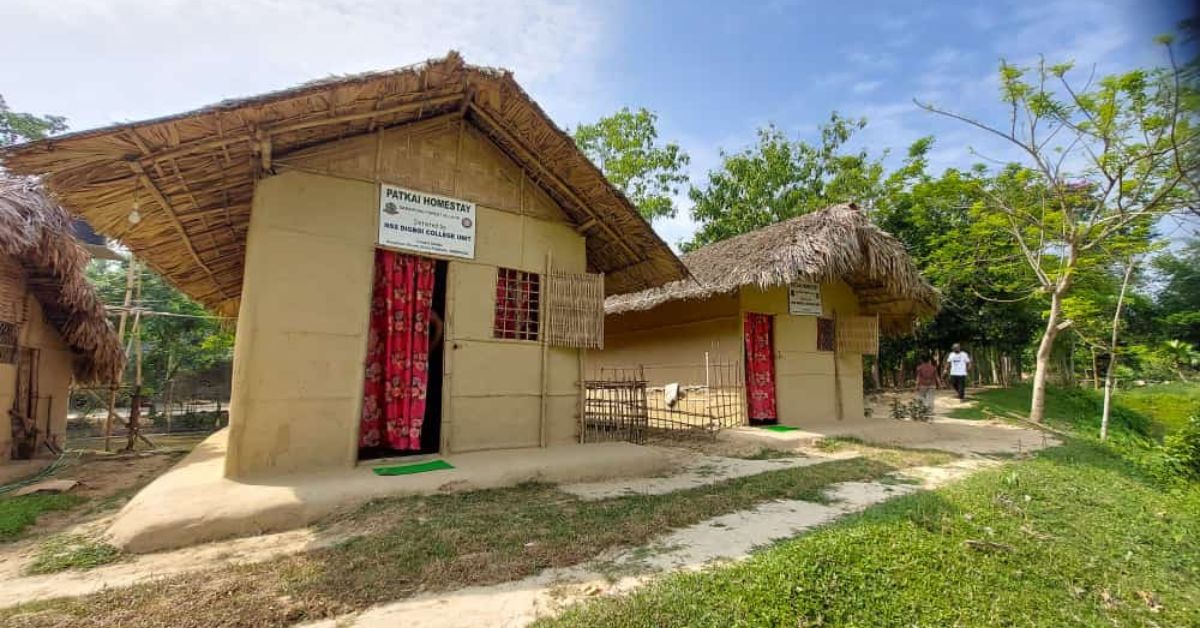 Homestays in Saraipung, built from local materials, offer tourists a unique glimpse into Assam’s natural and cultural heritage.
Homestays in Saraipung, built from local materials, offer tourists a unique glimpse into Assam’s natural and cultural heritage.
From hunters to hosts, bows to binoculars
Rajib also identified a critical need — a sustainable alternative to hunting that spoke to both the villagers’ hearts and their wallets. Enter eco-tourism, a novel concept to the villagers but one filled with potential.
Gradually, homestays emerged amid the trees, offering visitors a chance to experience the serenity and biodiversity that had been preserved. These homestays are constructed in traditional styles and provide an authentic experience of living close to nature.
Tourists, including international visitors, are accommodated in homestays that offer a unique local experience. When tourists arrive, they are welcomed into the heart of Assamese hospitality, savouring traditional meals cooked with local greens. One notable dish is rice cooked in bamboo.
Cultural programs and traditional dances are organised, giving tourists a glimpse into the local heritage and traditions while allowing villagers to share their rich cultural heritage directly with visitors.
The initiative didn’t merely change perceptions; it offered tangible economic benefits. “Incomes rose as villagers opened their homes to visitors eager for an authentic experience amidst the lush greens of Saraipung,” says Rajib.
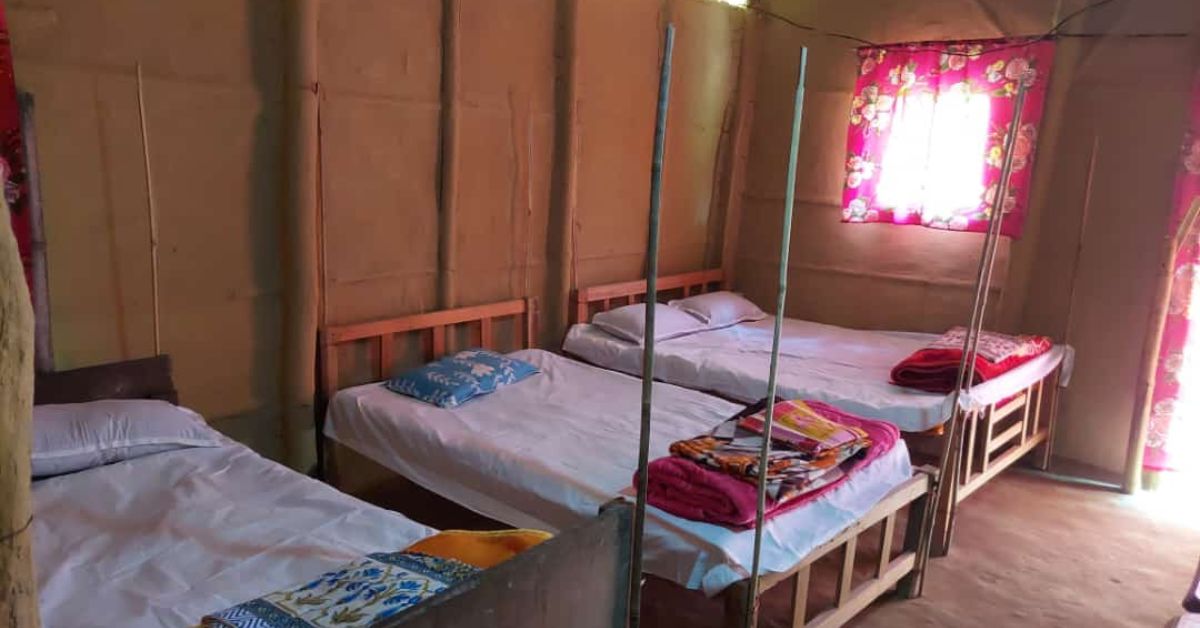 Tourism, especially during peak seasons, serves as a significant income source for guides and homestay owners like Sanatan and Gokul.
Tourism, especially during peak seasons, serves as a significant income source for guides and homestay owners like Sanatan and Gokul.
The homestays have been developed and maintained by the villagers who have been trained to cater to tourists. Rajib shares that Saraipung village comprises about 106 households, with a population between 300 and 400 people. “Beyond the direct eco-tourism participants, many in the community contribute by preparing meals, maintaining homestays, and engaging visitors in cultural programs,” he adds.
Sanatan, who runs a homestay in Saraipung village, says: “In the past, the villagers of Saraipung were engaged in hunting activities. When I was young, I would often accompany the other villagers on hunting trips. Rajib sir enlightened us on the negative impacts of hunting and introduced us to alternative means of sustenance. He frequently showed us short films on conservation and evem took us to Kaziranga National Park to deepen our understanding of wildlife, conservation, and eco-friendly livelihoods such as running homestays.”
“Now, I host tourists from around the world, including France, Israel, Maharashtra, West Bengal, Karnataka, Assam, and Gujarat. We prepare and serve them local tribal cuisines such as fish dishes and leafy greens like dhekia (fiddlehead ferns in Assamese). My homestay, which I built myself using bamboo and mud, offers accommodation at Rs 1,500 per day,” he adds.
With assistance from tourist guides, Sanatan is able to attract guests to his village. Although the monsoon season has currently paused his services, the last visitors arrived in March. Despite these pauses, running a homestay remains a viable means of livelihood for him. “Last season, I earned up to Rs 20,000. Prior to running the homestay, I worked as a daily wage labourer in tea gardens, earning merely Rs 200 a day. His efforts have truly transformed our lives for the better,” he mentions.
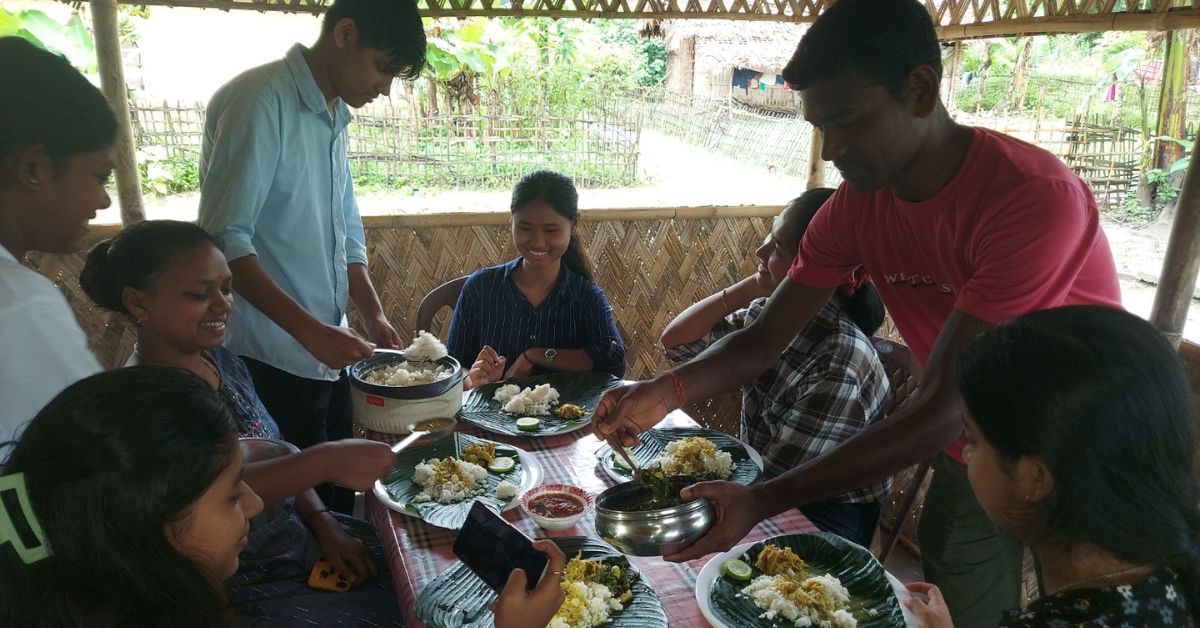 Local dishes, especially those prepared with local greens and rice cooked in bamboo, offer a taste of the unique culinary traditions of the area.
Local dishes, especially those prepared with local greens and rice cooked in bamboo, offer a taste of the unique culinary traditions of the area.
Meanwhile, 15 local youths have been trained as tourist guides who are knowledgeable about the local biodiversity, especially birds, butterflies, and mammals. These guides offer tours and share local natural history with tourists, enhancing their experience.
Gokul Tanti (32), a former taxi driver, has been working as a tourist guide in his village for the past decade. He shares, “My grandfather tells me that local villagers have been engaged in hunting animals in the forest. I have grown up seeing such incidents in the village. However, I went on to do a driving job.”
“I turned to tourist guide work after learning about it from Rajib sir. Our region sees a boom in tourism for five months from November to March. Last season, I had the pleasure of guiding over 30 tourists. I’d take them on nature trails and bird-watching adventures. Most of our visitors are PhD students from nearby universities who are keen to study local flora and fauna.”
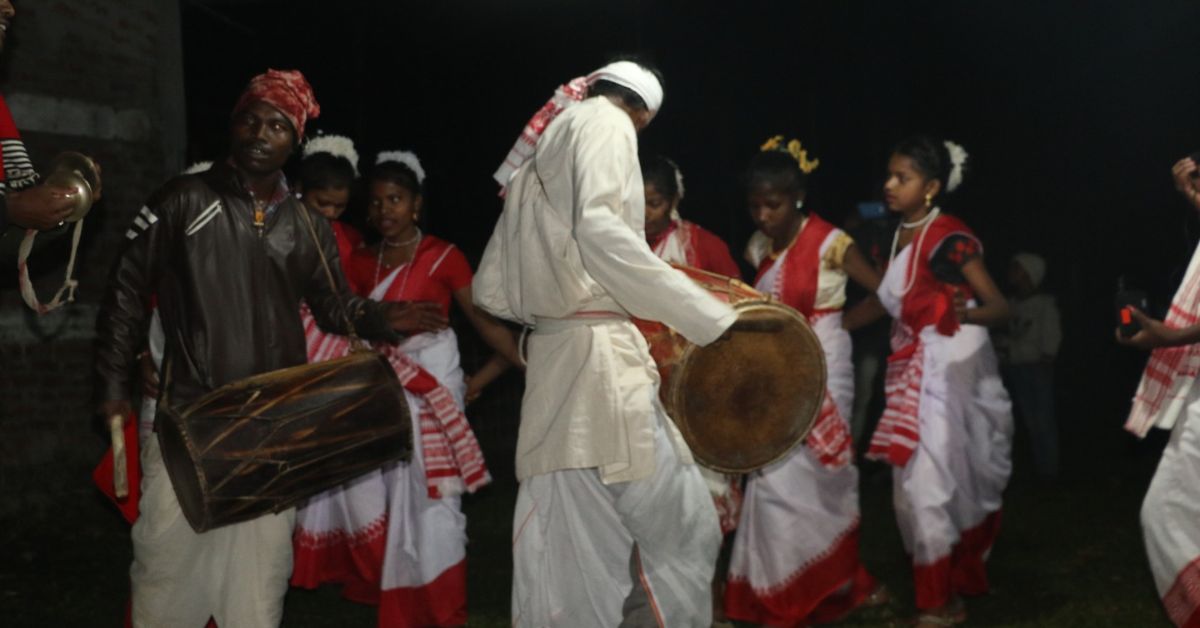 Villagers perform traditional dances, providing tourists with a deep insight into their rich cultural heritage.
Villagers perform traditional dances, providing tourists with a deep insight into their rich cultural heritage.
“We also introduce them to our tribal dance forms and cuisine, which I truly enjoy. This has become a lucrative source of income for us, as I earn Rs 1,500 per day as a tourist guide. During the rest of the year, when tourism slows down during the monsoon season, I focus on farming,” he adds.
Rajib mentions that these tourist guides are very talented as they have grown up observing the biodiversity of the region. “So they know much about the birds than I know. They are even better birder than me,” says the zoology professor with pride.
Through these initiatives, wildlife populations began to rebound, and a sense of pride took root among the villagers. Where once the bow and arrow reigned, now stood binoculars and guidebooks as villagers learned to thrive as guides and ambassadors of their natural heritage.
“Today, the village also boasts plastic-free status, supported by local initiatives such as eco-brick production and vermiculture,” shares Rajib.
From tracking wildlife for food to tracking their calls for eco-tourists, this community has forged a path of hope and sustainability. “By providing tools, education, and opportunities, real and lasting change is achievable,” he adds.
Rajib’s aspirations don’t halt at Saraipung. He envisages a broader application of similar transformative processes across other villages.
All images courtesy: Rajib Tariang.
News